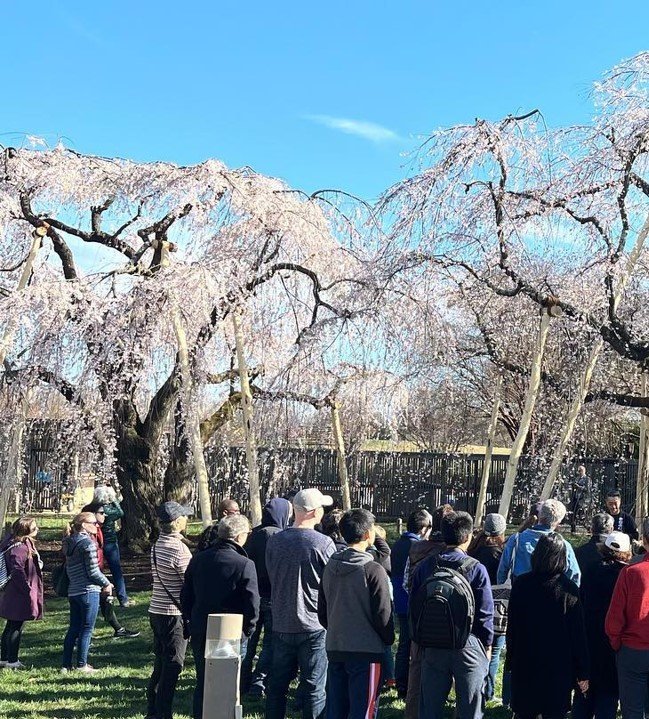US National Arboretum Historic Cherry Tree Restoration
Washington, DC | 2019 - 2023
Collaboration Ron Henderson, Master Gardener Kurato Fujimoto (Kanazawa, Japan), Hans Friedl, Brendan Tyler Hall, Ben Jensen, Tatiana Guider, Indigo Routh, Tanya Kelley United States National Arboretum Richard Olsen, Kathleen Emerson-Dell, Andy Bello Friends of the US National Arboretum, Penn State Grounds Maintenance and Arborists: Dumbarton Oaks, Hillwood Garden, Embassy of Japan in the United States
Recognition Washington Post
Trees (2) Prunus x itozakura
Symposia and Workshops Connecting Cultures: Japense Flowering Cherries in America (US National Arboretum, 2023), Preserving Legacy: Cherry Blossom Conservation Workshop (US National Arboretum and Embassy of Japan, 2025)
Two venerable Japanese cherry trees at the United States National Arboretum were conserved using indigenous Japanese horticultural techniques such as crutching, bracing, and crown-shaping. Kurato Fujimoto, a Japanese master gardener from Kanazawa, Japan and Kenroku-en Garden advised on this scientific and cultural project.
Two weeping Japanese cherry trees (Prunus itosakura Pendula Group) stand along the roadway outside the National Herb Garden. Among the Arboretum’s oldest flowering cherries, this majestic pair was planted some time in the early 1950s. For nearly three-quarters of a century, Arboretum staff have tended to the trees. Half a world away, the Japanese have over many centuries developed arboriculture techniques that are markedly distinct from Western approaches. In March of 2023, the U.S. National Arboretum invited Kurato Fujimoto, one of Japan’s leading authorities on these traditional tree care methods, to Washington, DC, to help us install tsurazue, or crutches, to support these two special trees as they approach the end of their first century of life. This is one of the first, and certainly the most public, installation of Japanese crutches in the United States, an experiment fitting for the U.S. National Arboretum.
These weeping cherries are beginning to feel their age. As the years have passed, they’ve lost several large limbs. As the trees have struggled, arborists have cared for them in the most rigorous manner possible, following established best practices in arboriculture as developed in the United States. Two frequent techniques have been pruning and cabling. Pruning removes damaged and dying branches. This allows the tree to focus its energy on growing the stronger, healthier parts of itself closer to the trunk and proactively removes limbs that might break off violently and damage healthy tissue. Weak or structurally vulnerable limbs are sometimes cabled: a metal cable is bolted both to the at-risk branch and to a sturdy, healthy branch or the tree’s truck. The tree can help hold itself up via these cables. And while these interventions have stalled the trees’ decline, they have not stopped it. In fact, the last decade and a half or so has been particularly hard on the trees. We had reached the end of what we could do to care for these trees in the methods we were familiar with. (Protecting our Venerable Weeping Japanese Cherry Trees, United States National Arboretum) https://www.usna.usda.gov/discover/protecting-our-venerable-weeping-japanese-cherry-trees/
We extend our gratitude to a generous donor and friend whose commitment to great trees and to US-Japan exchange cultivated and supported this project.







